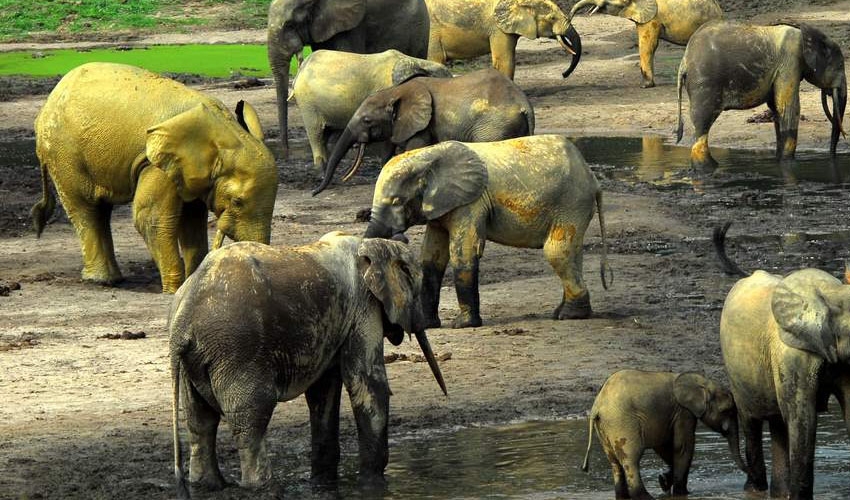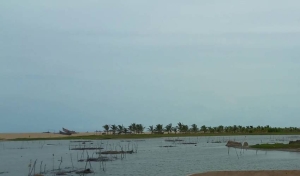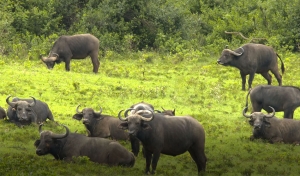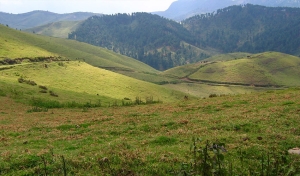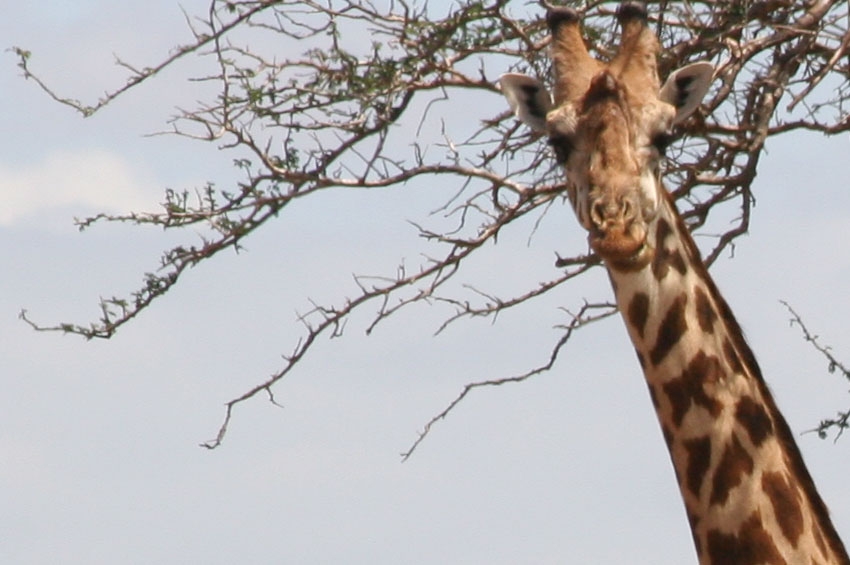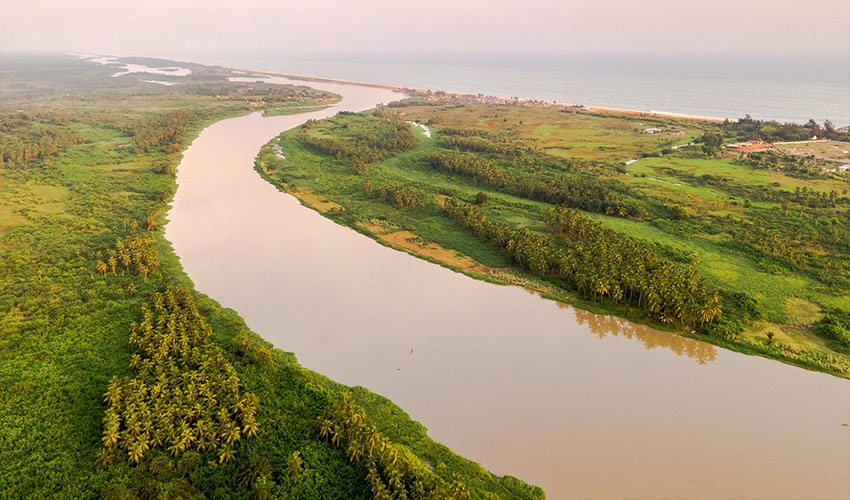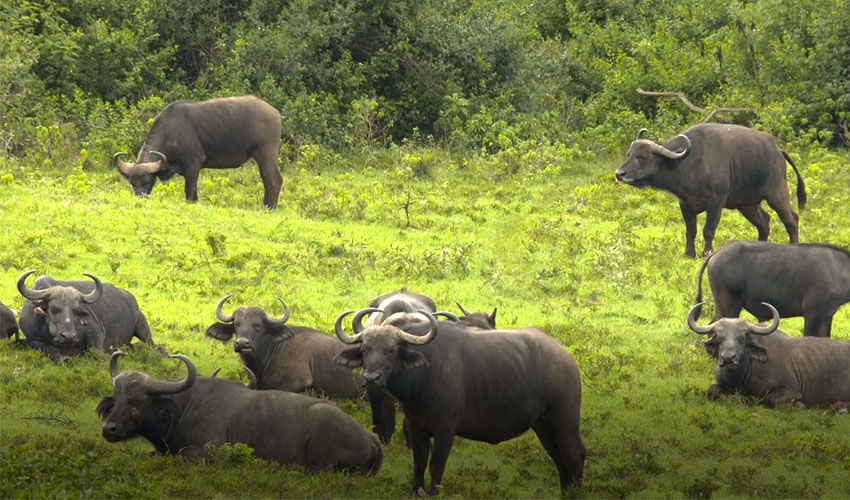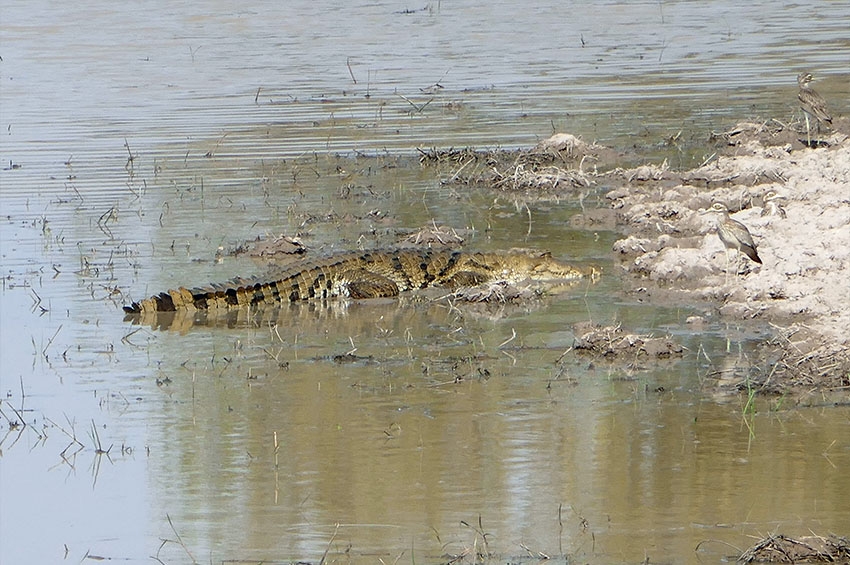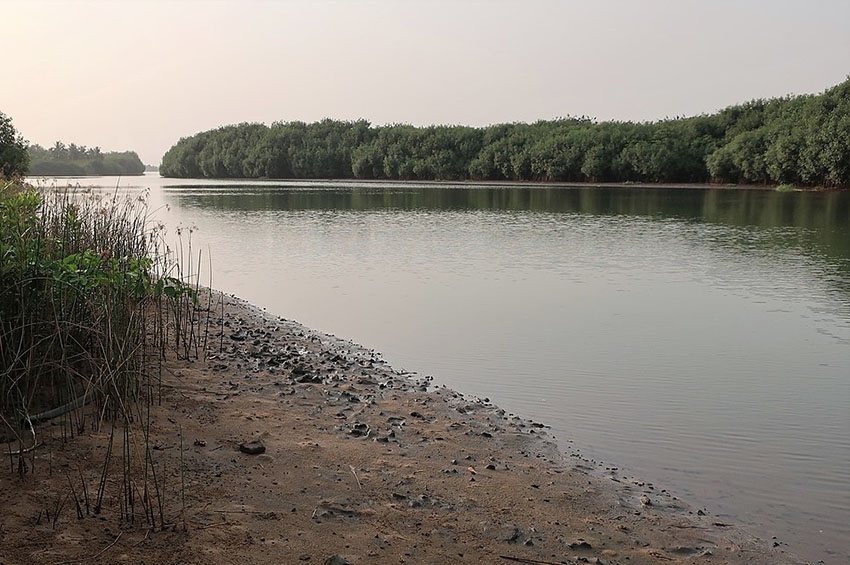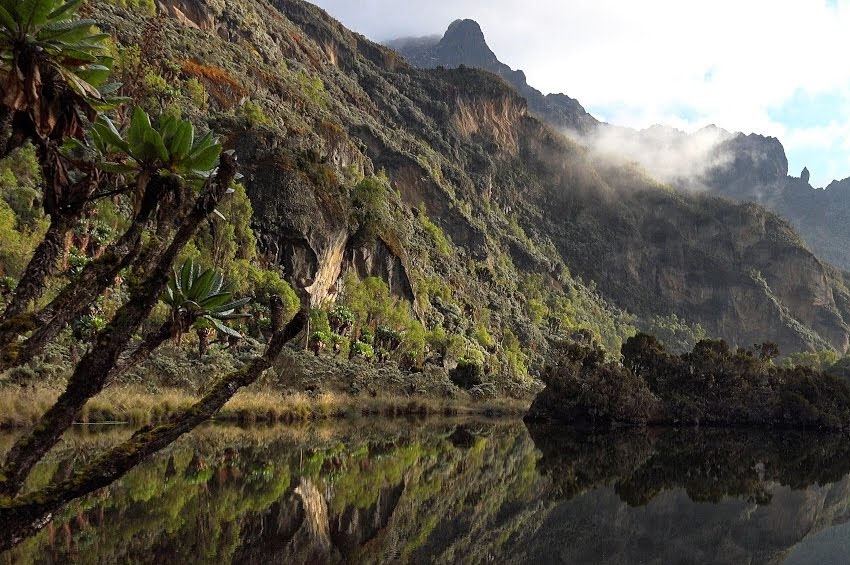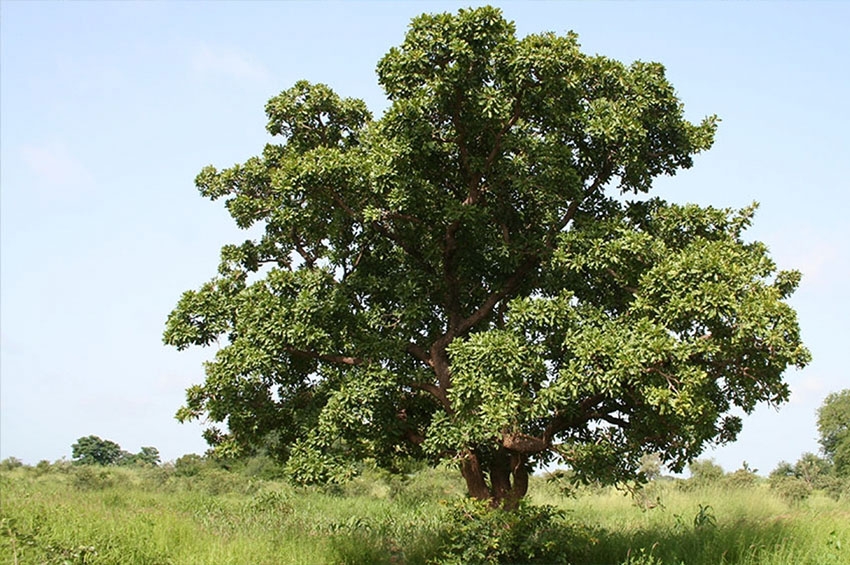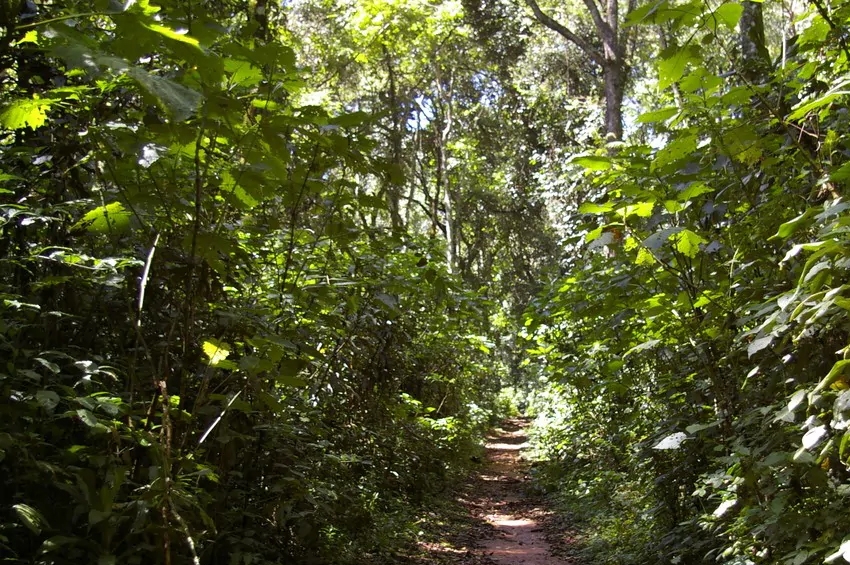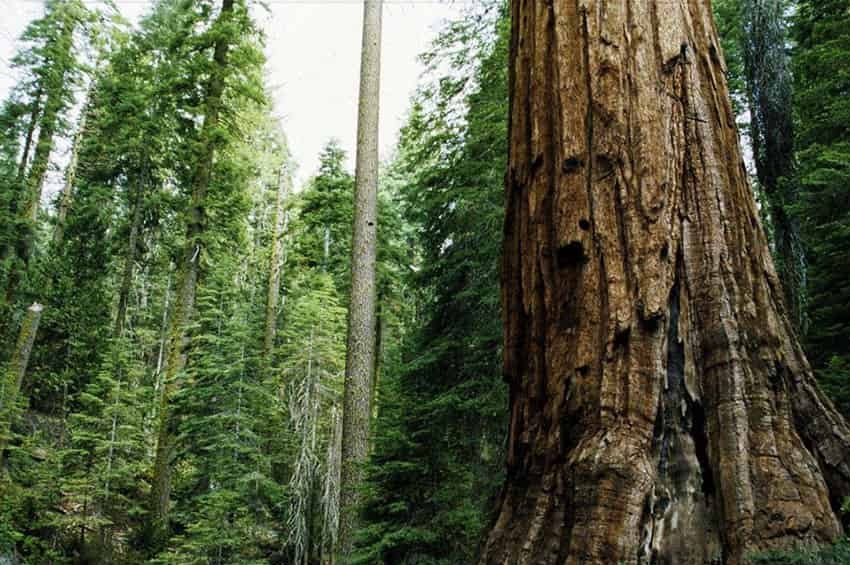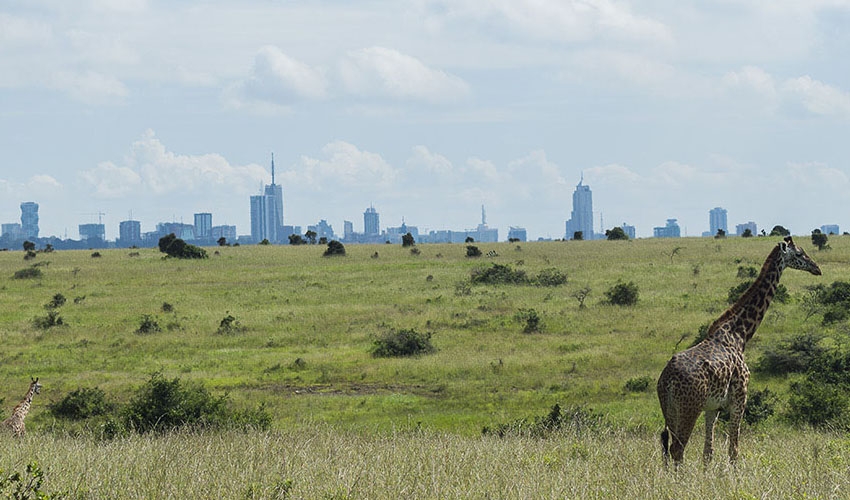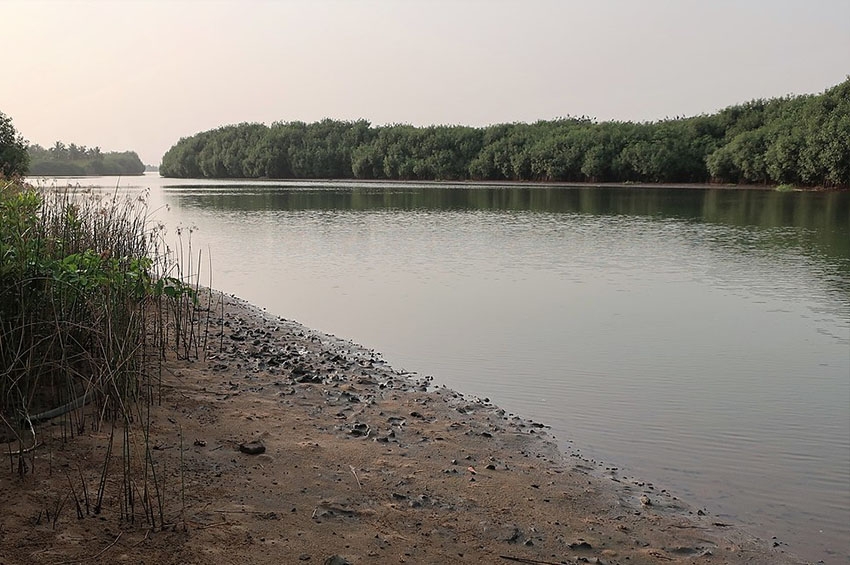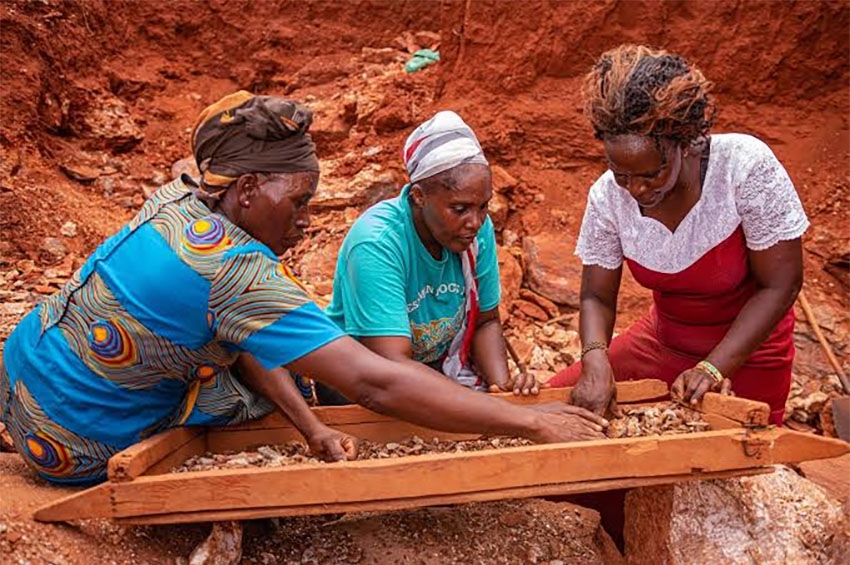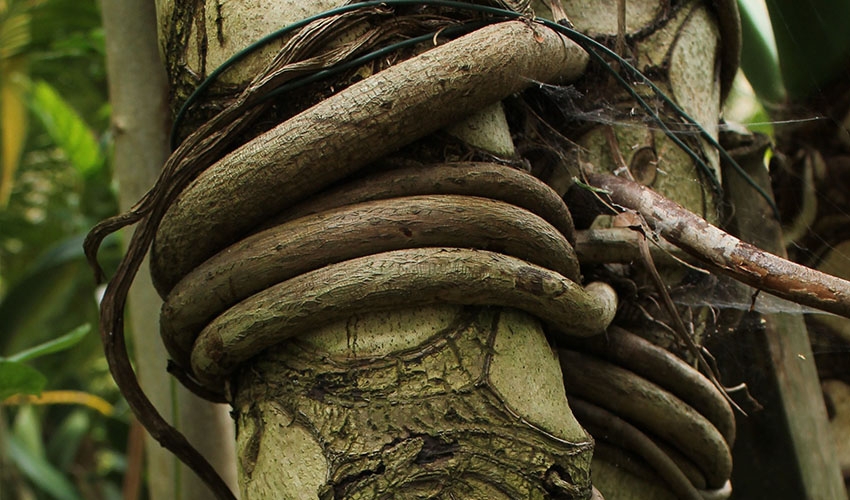During the same period, the two conservation NGOs established field projects in the different sites. Following the Central Africa Heads of State Summit of 1999 in Yaounde with the subsequent birth of COMIFAC, the Governments of Cameroon, Central African Republic and the Republic of Congo made their commitment by signing a Cooperation Agreement to establish and collaboratively manage the transboundary forest complex called the Sangha Tri-National (TNS). TNS is a pioneering model of cross-border conservation initiatives and development of a forest policy in the Congo Basin. It is the first three-country transboundary area to be nominated as a world heritage Site by UNESCO since July 2012.
Environmental Context of TNS Topography
The entire Landscape consists of plateaus broken by alluvial plains. Altitude varies between 330 and 600 m in the Republic of Congo and reaches nearly 700 m in CAR. The average annual precipitation is 1450 to 1600 mm. The vast majority (93%) of the Landscape is composed of highly biodiverse dense rainforest, with some semi-caducifoliated terra firma forests rich in tree species. Trees with commercial value include Terminalia superba (Limba), Sterculiaceae, in particular Triplochyton scleroxylon (Ayous), and Ulmaceae (Chupezi et al, 2009). The Landscape also has an exceptionally rich biodiversity of fauna. In the CAR sector, 105 species of land mammals have been identified, including: elephants, gorillas, chimpanzee, antelopes, leopards. Reptiles found in this Landscape are typical for the region and include crocodiles, lizard, softshell turtle, viper, green mamba. Fish species are little known, despite their importance for local populations. In the Cameroonian portion of the Sangha Basin, more than 200 species of fish have been identified, and the whole basin has nearly 300 identified species (CBFP 2006; UNESCO, 2010).
Social Context of TNS
The Landscape has a very low population density, estimated at 0.7 inhabitants/km², but this varies across the estimated 25 000 people. Two dominant indigenous ethnic groups inhabit the Landscape area: Bantus (predominantly farmers) and pygmies (predominantly forest-centred hunter-gatherers) (Jackson 2004). The major economic activities around the landscape in CAR and Cameroon are: logging, mining, hunting, fishing, agriculture, livestock breeding, gathering, conservation, tourism and trade.
SANGHA TRINATIONAL'S RICH BIODIVERSITY
The main protection zone of the TNS includes the National Parks of Lobéké (Cameroon), Dzanga-Ndoki (RCA) and Nouabalé Ndoki (Congo) covering a total area of 754,286 hectares. The peripheral zone includes production forests (industrial logging concessions, community forests,), wildlife management areas (sport hunting concessions, community hunting zones) and agroforestry areas as well as residential areas (Usongo, 2010). It is a priority area for the conservation of the biodiversity of the Congo basin.
Dzanga Sangha – Central African Republic (CAR)
The Dzanga Sangha Protected Areas were established on December 29, 1990 with an area of more than 400,000 ha (4000 m2). They are located in the Sangha–Mbaere Division precisely in south–western region of CAR comprising of two areas: the Ndoki sector that spans 725 km2 and the Dzanga sector which covers 495 km2. Being part of the state’s heritage, the special reserve is placed under the Ministry of Water, Forests and Tourism of CAR. The area has as a geographical feature, a Guinean forest type climate. The obstacle-void vision it provides in the Dzanga saline allows a very good unique visibility of wildlife, a key asset for tourism development in the region. The complex also contains a rich socio-cultural content and serves as habitat particularly for Baka pygmy forests and Dzanga Sangha fishermen. Dzanga Sangha also provides tourists and the scientific community with several exceptional features such as the majestic elephants of Dzanga Bai, Bai Hokou’s habituated gorillas, all accompanied by magnificent modern infrastructure.
Lobéké – Cameroon
Lobéké National Park, mainly constituted of equatorial forest is part of the Congo Basin in the extreme south–eastern Cameroon. It covers an area of 217,854 hectares surrounded by industrial and artisanal logging concessions as well as hunting sport concessions that form the peripheral area, all are integral parts of the first Category Operational Technical Unit, UTO Southeast, covering an area of about 2.3 million ha. Created on March 19 2001, the Lobéké has a swampy clearings network especially on the eastern side of the park. The park has one of the highest concentrations of African elephants and gorillas. Whether in eco-tourism, or ethno-tourism, Lobéké National Park does not lack charm. Lobéké National Park has been the subject of many investments to convert it into an eco-tourism site.
Nouabalé Ndoki – Congo
Located at the extreme northern part of the Republic of Congo, Nouabalé Ndoki National Park covers about 4,000 km2, covered with primary forests. It was created in 1993 and is one of the largest forest areas reserves of West Central Africa. The park covers about 2% of Congo’s forests. This area has never been exploited by logging companies and has a botanical and biological interest. Rich in flora and fauna, the park has many species of large mammals such as elephants, western lowland gorillas, chimpanzees, panthers; bush pigs, buffaloes, etc (Convention on Migratory Species, 2008). It also contains more than 300 bird species; 1000 plants species and a rich diversity of forests. Some Swamps in flooded forest are home to different species such as the blue yellow and black front backed duikers. The three species of African crocodiles live in the national park, where freshwater turtles frequent the marshes and bay.
Nouabalé–Ndoki National Park is of great importance as an intact forest block which will remain as an isle in the ocean of forest concessions in Central Africa. It represents an intact ecosystem; the last human occupation of the site dates back to 600-900 years. The research conducted in the National Park by Wildlife Conservation Society showed no signs of recent human habitation in the area, not even the oil palm which often indicates abandoned villages in the heart of the forest with a closed canopy. According to researchers, the Nouabalé-Ndoki National Park is remarkable for the confidence shown by most animal species with regards to man. Many generations of large mammals have never seen a human poacher and they show a naive behavior when meeting men.
CHALLENGES FACED IN SUSTAINING THE SANGHA TRINATIONAL
Illegal logging does not appear to be a major problem in the nominated property and the park outlook, in this regard, seems positive. The concern, however, is the side effects of logging through the establishment of roads in otherwise inaccessible areas. Excessive commercial poaching for bushmeat and / or trophies may be the main threat to TNS. Because of its rich wildlife, the parks are a favourite hunting ground for heavily armed poachers who generally organize shipments from the Democratic Republic of Congo (Kinshasa) or the Republic of Congo Republic (Brazzaville). Eco-guards with their rudimentary materials are far from being able to withstand this threat. So, strong commitment to the fight against poaching should be encouraged. Damage to crops by wildlife such as elephants and gorillas fuels a sensitive conflict between humans and wildlife in the region. A small illegal diamond exploitation is developing in the northern sector of the Dzanga-Sangha Special Forest Reserve, proposed as a buffer zone, and can sometimes occur in parks. Ebola fever has not been reported in the properties but poses a possible threat, in particularly for lowland gorilla populations.
RESTORATION EFFORTS
Support to the Conservation and Management of TNS
The joint management of the parks is solid and determined and brings together the three States Parties, which is an indispensable permanent condition. The three national parks that make up the TNS all have government-provided management and administrative staff and, complemented by international support from non-governmental organizations as well as multilateral and bilateral agencies.
Cross – Border Cooperation
Management, law enforcement, research, monitoring and tourism require coordination across national borders. A Trinational Monitoring and Action Committee is in place bringing together the three countries (Central African Republic, Cameroun and Congo) at ministerial level. A Trinational Monitoring Committee brings together the three countries at regional government level. These mechanisms are effective and ensure joint protection and management of the property and should be maintained and strengthened.
Participation and Consultation of Indigenous People
The traditional rights and livelihoods of indigenous and local populations, such as the Bakas, are a fundamental element, increasingly recognized in the management of the TNS. While in the Lobéké National Park (Cameroon) there are areas of use in the park, in the Central African Republic and in Congo, the local use of the resources including the hunting and the autochthonous picking, is not allowed in protected areas, which affects local livelihoods and could be a source of conflict. Hence the crucial importance of finding a general balance between nature conservation and the local use of resources in the entire landscape. A local authority stated that: "The issue of the livelihoods of local communities and indigenous peoples needs to be taken into account in an integrated manner".
GREEN ECONOMY POTENTIAL
Logging and hunting are prohibited in national parks. Furthermore, the remoteness of the TNS adds additional natural protection against the exploitation of resources. It is essential to ensure that activities such as tourism, gathering NTFPs (Non-Timber Forest Products), farming, raising livestock and aquaculture are strongly practised so that the surrounding landscape is sufficient for the needs of local and indigenous communities. They could be rendered economically viable with outside support, thus increasing incomes and reducing poverty. The development of the tourism infrastructure is adequate for such an isolated area and seems appropriate to deal with the currently very low number of visitors. In the medium term, it would be useful for the TNS to have a comprehensive tourism plan.
CONCLUSION
The Sangha Trinational represents a broad spectrum of tropical rainforests, rich in species, from the Congo Basin in Central Africa. The flora is enriched by herbaceous species found exclusively in many types of forest glades. It protects a large number of tree species that are otherwise heavily exploited for trade, such as the critically endangered mukulungu (and several species traded under the name "ebony" which are in danger of extinction). The inscription on the World Heritage list provides a concrete opportunity for States Parties to translate a whole range of different commitments of States Parties regarding the rights of local and indigenous peoples into action on the ground. Maintaining the ecological values of TNS will depend not only on law enforcement but also, ultimately, standards for the commercial extraction of resources and the extent to which local and indigenous communities in the surrounding landscape will accept and support the parks.
REFERENCES
CBFP (2006). The Forests of the Congo Basin: state of the forest 2006 Brazzaville, Congo Basin Forest Partnership (CBFP).
Chupezi, T. J., Ingram, V., & Schure, J. (2009). Impacts of artisanal gold and diamond mining on livelihoods and the environment in the Sangha Tri-National Park landscape. CIFOR.
Convention on Migratory Species (2008). Action Plan 2008: Western Lowland Gorilla. First meeting on
Conservation of Gorillas and their Habitats. Rome
Jackson, D. (2004). Implementation of international commitments on traditional forest-related knowledge: indigenous peoples’ experiences in Central Africa. Our knowledge for our survivial, 1, 150-303.
UNESCO (2010). Le Patrimoine Mondial dans le Bassin du Congo. Centre du Patrimoine Mondial,
Paris, France.
Usongo, L. (2010). Lessons learned from Sangha Tri-National Landscape. Landscape-scale conservation in the Congo Basin. USAID, 21-29.


